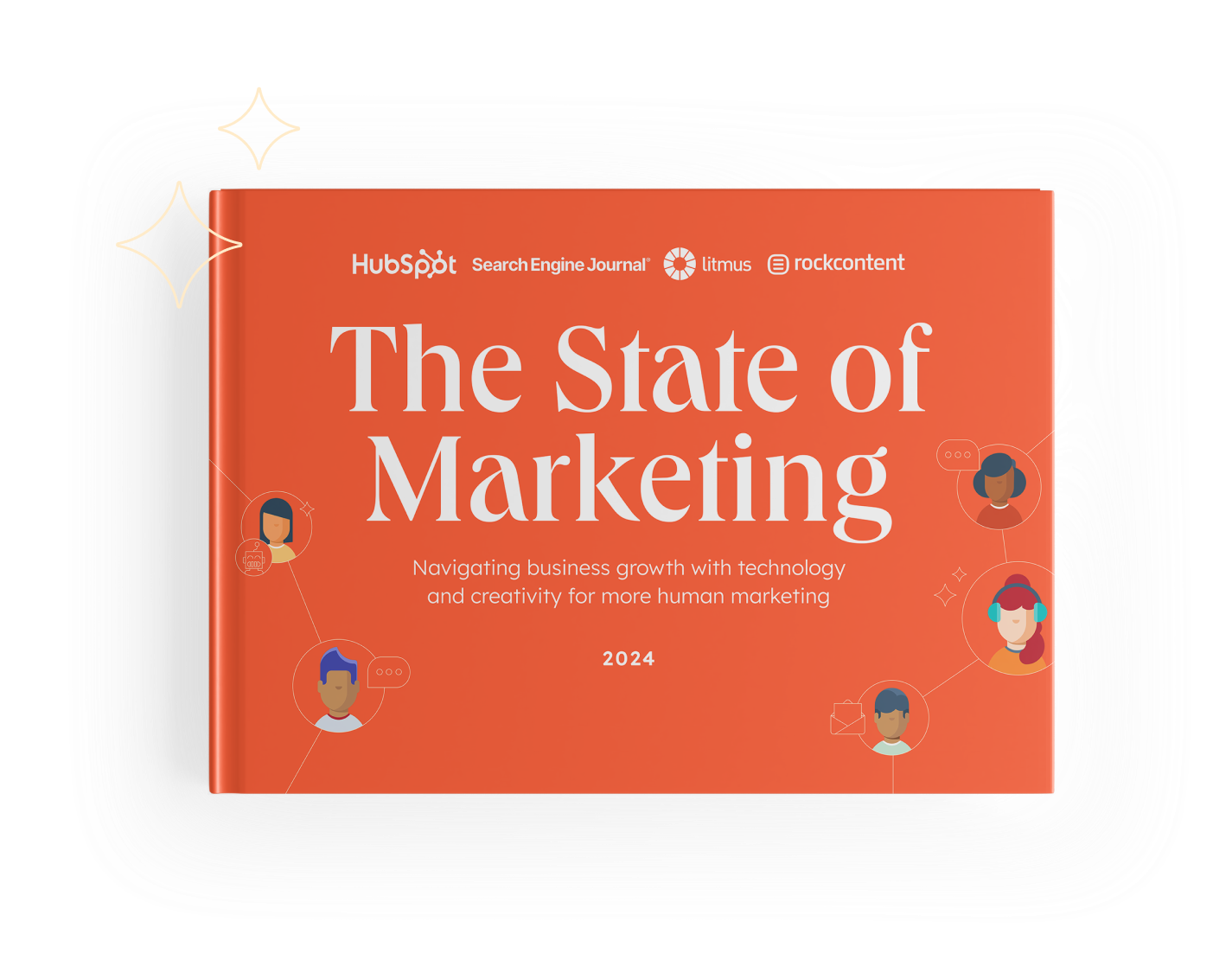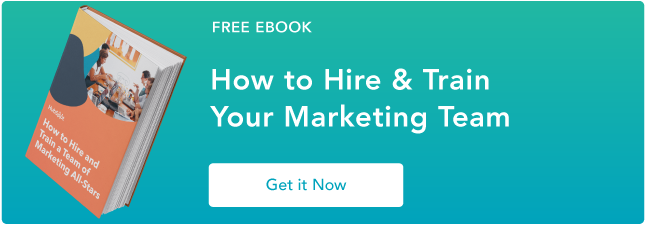My first time getting hired — a college internship — wasn’t exactly memorable. Honestly, there wasn’t much of a new hire onboarding process at all. Instead, my boss gave me a brief rundown on how the organization was structured, what my role entailed, and what my first assignment would be.

By the time I got to my cubicle, I was feeling pretty unprepared and even frustrated. Who was on my team? Wasn't I supposed to meet them? What do I even do? While I may have been a lowly intern, my experience wasn’t unique.
Ultimately, your new hire onboarding experience will set the stage for your overall employee satisfaction. So, I’m going to draw from experience to give you an example of an onboarding process that will help you nurture a more cohesive company culture. Let’s dive in.
![→ Click here to download our free guide to hiring and training a team of all-stars [Free Ebook].](https://no-cache.hubspot.com/cta/default/53/c42148d7-13dd-4c38-b907-cff1602ee62f.png)
Table of Contents
Why Effective Onboarding is so Important

Before we explore my approach to onboarding, I need to highlight why your employee onboarding process matters. After all, if your company's onboarding process just involves filling out new hire paperwork on day one and meeting a bunch of HR professionals the next day, that experience might be clouding your judgment on just how influential onboarding can be.
In essence, there are two main reasons you want your onboarding process to be effective. First, you reap what you sow. You need to give employees what they need to help you achieve your company goals.
In a 2022 onboarding survey by Paychex, 52% of the 1,002 surveyed working Americans reported feeling satisfied with their onboarding experience.
What’s really surprising is that despite that being the case, the same number of employees (52%) felt undertrained after their most recent onboarding experience, and it was even worse for employees in small businesses (66%) and remote positions (63%).
And if you’re thinking there’s a significant gap between how these workers perceive their level of preparedness for their role and how prepared they actually are, you’d be correct.
We’ve all dealt with this before — we start a job thinking we’ve received adequate training, only to learn that it wasn’t the case later on. And for the average person, it’s easy for them to start feeling inadequate or thinking their role has fallen victim to scope creep and, in turn, questioning whether they made the right decision when they joined your organization.
Which brings me to the second reason why you want your onboarding to be effective: you want the employee to feel like they made the right decision by joining your organization.
Admittedly, that’s easier said than done. As you’ll see in the next section, there’s a lot of preparation and effort that goes into it. But it’s the only way to avoid the negative outcomes after an awful onboarding experience, which, according to the same Paychex survey, include:
- Feeling disoriented (56%).
- Feeling let down (52%).
- Feeling devalued (49%).
- Losing interest (46%).
- Losing trust in the organization (33%).
- Feeling negatively about the organization (20%).
I’d be deeply concerned and, quite frankly, sad if my new hires felt any of these things. I’ve been in that position, and these are anything but good feelings.
Companies should also be worried about what that would mean to their overall retention rate and productivity — especially when you consider that a strong onboarding process can increase new hire retention by 82% and improve productivity by 70%, according to Zippia’s recent onboarding research.
HubSpot uses the information you provide to us to contact you about our relevant content, products, and services. HubSpot will share the information you provide to us with the following partners, who will use your information for similar purposes: Search Engine Journal, Litmus, Rock Content. You can unsubscribe from communications from HubSpot at any time. For more information, check out HubSpot's Privacy Policy. To unsubscribe from Search Engine Journal's communications, see Search Engine Journal's Privacy Policy. To unsubscribe from Litmus's communications, see Litmus's Privacy Policy. To unsubscribe from Rock Content's communications, see Rock Content's Privacy Policy.

The State of Marketing in 2024
HubSpot's Annual Inbound Marketing Trends Report
-
Top Marketing Channels
-
AI in Marketing
-
Managing Privacy
-
The Future of Marketing
So, to summarize: High-quality onboarding helps everyone involved in the employer-employee relationship avoid wasting their time and feeling frustrated. And when you’ve got an onboarding plan in place, it’ll be so much easier to hire and train marketing all-stars.
I also want to stress that onboarding is just one part of the recruitment process, and there are many important steps to take before you bring a new team member on board. To ensure you’re hiring the best person for the job, check out our ultimate guide to hiring and recruiting great employees.
Now that we’ve discussed why proper new hire onboarding matters, let’s review my onboarding checklist.
Onboarding Checklist

Although onboarding can make or break your company‘s professional relationship with a new hire, creating a solid new employee onboarding process isn’t as complex as you may think.
Managers and HR departments should approach it with the understanding that the more thorough they are while integrating new employees into the company, the more benefits they'll reap from that employee in the long term.
We have that mindset at HubSpot, and it pays off. Not only does it help create long-lasting working relationships with our team members, we get to see first-hand how our efforts impact the employee experience.
Take it from Kuba Niechciał, director of engineering at HubSpot, who recently went through onboarding at HubSpot and had this to say: “I'm super grateful for that experience, both for the team to host and educate me, and the org to invest in long-term success of new leaders. It was very energizing, reflective, and also intimidating!”
With that in mind, I’m going to walk you through what a typical onboarding process for my team members looks like. I’m going to draw from a recent experience with a new member — let’s call her Holly. That way, you can refer back to my process and use it as a checklist when your next new hire arrives.
Before the First Day
The key to this pre-boarding stage is preparation. And although a lot of the things you’ll see here are usually part of any company’s hiring standard operating procedures (SOPs), you definitely want to account for everything to make a strong first impression.
Here’s how I prepared for Holly before she set foot in the office for the very first time:
- The first thing I did was gather the necessary paperwork (e.g., W-4, I-9, insurance forms, and direct deposit forms).
- After that, since I know Holly will need to review the employee handbook and sign a non-disclosure agreement (such is the marketing life), I added them to the list. I also made notes for where she can park and what time she should arrive.
- I also prepared a workstation for Holly since she’ll be in the office three days a week. That involved setting up her computer and updating the software she’ll be using.
- Since she’ll be working remotely for two days a week, I also compiled her login credentials for our tech stack and wrote down her company email.
- Moreover, I prepared relevant reading material that was not already included in the employee handbook (e.g., SOPs for the software she’ll be using).
- I also asked Holly’s soon-to-be supervisor what he wanted her to catch up on before she officially started. He asked me to pass on one of the campaigns our team is working on to start familiarizing her with what we do.
Before the first day, I think you should also consider leaving a note on your new hire's desk or sending them an email. I opted for an email to strike up a casual chat with Holly, and it was nice to get to know her a bit before we officially met.
This helped us build a little rapport before she clocked in for training. Plus, I found out that she likes Indian food, so I knew what to plan for lunch on our first day.
Lindsey Chastain, founder and CEO of The Writing Detective, a content strategy and media relations company, also does this, and told me she prepares by “sending the employee a welcome email and what to expect for the first few days. I ensured the new hire had the contact information of an employee other than me, ‘just in case.’”
On the First Day
If you prepared everything in the previous step, everything on the first day should sail smoothly. Plus, you’ll have more time to focus on the human side of things on the first day as opposed to having to problem-solve because something went wrong.
Here’s what I focused on during Holly’s first day:
- I had her arrive at 9:00 a.m., so I could prepare the team that’ll be working with her ahead of time. That way, they could say hi and introduce themselves to her when she arrived at her workstation.
- When Holly got settled, I provided her with the welcome packet containing the hiring paperwork, employee handbook, agreements, and other guidelines so she could start reviewing them.
- By the time she was done, it was lunchtime. So, I took Holly and a few team members to a nearby Indian restaurant. I was happy to see her connect with her co-workers and that she enjoyed the meal.
- When we got back, I gave her a tour of the office, including the bathrooms, the kitchen, and the support desk. I also introduced her to everyone as we walked by and gave her a brief idea of what everyone does in each department. Joel Wolfe, president and founder of HiredSupport, also likes the tour approach. He says, “It helps break the ice and get them well acquainted with the company.”
- Then, I set up a meeting between Holly’s direct supervisor and her. This meeting allowed the supervisor to introduce himself, explain how the department is structured, and answer a few questions Holly had.
- Lastly, I had Holly meet her onboarding mentor (a fellow marketer on the team). This is the person she’ll go to whenever she has any questions to get her up to speed.
The first day will vary depending on how many new hires your company onboards at a time and how you engage them. But generally, this is what the new hire onboarding process looks like on the first day at HubSpot, and it's something even our directors go through.
Niechciał found this experience at HubSpot humanizing, to say the least. Since he felt “The experience of working day-to-day with a team is something easy to forget if you stay in leadership positions for long,” he believes these first-day activities helped him connect with his co-workers from the get-go and hit the ground running.
Pro tip: To boost employee engagement and keep things focused, I also gave Holly a "30-day plan,” which included:
- Names of people she should reach out to for lunch or coffee. I went with people she'll be working with closely or people I believe can offer her guidance.
- Reading material that will help her succeed in her new role — since she's one of our new social media managers, I included some blog posts about the current landscape of social media that I’d like her to keep in mind.
- My expectations for her first month (e.g., "I'd like you to brainstorm and present one marketing video campaign idea by the end of this month").
During Week One
After the first day, the true challenge began. Not because I expected things with Holly to get difficult, but because after the first day, my team and I must work hard to be there for Holly and hold our end of the bargain moving forward.
After all, we didn’t want Holly to think we just made empty promises at the start — we want her to feel like we’re truly there for her and are invested in her growth as much as we expect her to be invested in ours. With that in mind, here’s what Holly’s first week looked like:
- Within the first few days, we assigned Holly her first project. I find this helps new hires feel like a valuable asset to the team and allows them to become more comfortable in their roles. She checked in both with me and her boss on questions she had, but it was great to see how quickly she took the initiative.
- Meanwhile, I double-checked that all of her paperwork was completed by this point.
- Holly, her supervisor, and I also went over what the set goals and employee performance evaluations would be for her first month. We did this together to make sure everything was clear on both sides.
- Lastly, I made sure to set aside a bit of time to go over her HubSpot portal. She was already pretty familiar with the software, but there were a few features she still had questions about, and learning the software is vital to succeeding in her new role.
Pro tip: It’s critical to keep your schedule open if you’re mostly in charge of a new hire's integration into the new team, like I was with Holly. I made sure she had some one-on-one lessons and we went over our software or work processes a bit each day.
HubSpot uses the information you provide to us to contact you about our relevant content, products, and services. HubSpot will share the information you provide to us with the following partners, who will use your information for similar purposes: Search Engine Journal, Litmus, Rock Content. You can unsubscribe from communications from HubSpot at any time. For more information, check out HubSpot's Privacy Policy. To unsubscribe from Search Engine Journal's communications, see Search Engine Journal's Privacy Policy. To unsubscribe from Litmus's communications, see Litmus's Privacy Policy. To unsubscribe from Rock Content's communications, see Rock Content's Privacy Policy.

The State of Marketing in 2024
HubSpot's Annual Inbound Marketing Trends Report
-
Top Marketing Channels
-
AI in Marketing
-
Managing Privacy
-
The Future of Marketing
During the First Month
Although my interactions with Holly dropped quite a bit after the first week, I still made myself readily available in case she needed anything. On top of that, I did the following:
- I scheduled weekly meetings to give Holly constructive criticism regarding her first couple of assignments. Although these meetings were straight-to-the-point, I really took time to highlight Holly’s strengths and show appreciation for the efforts she made. I really recommend doing these sessions where you share meaningful feedback — Gallup even deems it a great manager’s most important habit to keep employees engaged.
- I continued to give Holly blog recommendations, and threw some books in the mix. As a marketer, I really want to foster a culture of keeping up with current trends across my team.
- I checked in a few times to make sure she was meeting the right people and getting together with core members of her team.
- I also asked for feedback from Holly. If I’m working with a large group, I’ll offer the option to fill out an anonymous survey. But in this case, I just asked her if she needed anything else to succeed or what she wished we could provide.
- As day 30 approached, I organized a team outing to help Holly bond a little more with the team — we went out to lunch with her whole team that day, and I made sure the conversation kept up all afternoon.
- Finally, I checked in with her mentor to see how their meetings had been going so far.
After the First Month
After a month, some companies will consider the new hire onboarding process finished. However, HubSpot has a pretty long new hire onboarding process that can often last at least six months (even up to a year).
That said, here’s how I’ve been handling Holly’s onboarding now that she’s been with us for five months:
- I still make sure to send Holly an email at least once a month, but it’s usually every other week.
- I also asked her supervisor for feedback on how she was doing after about three months. Note that this isn’t me just trying to assess her performance. I’m also trying to determine the areas in which our onboarding process can improve.
- Lastly, I’ve been having weekly or biweekly one-on-one check-ins with Holly. I use these sessions to talk through any tricky task-related situations and discuss personal goals and performance with her. Having this clear line of communication has proved invaluable in measuring her performance and finding areas where we, as a team, can improve.
Employee Onboarding Best Practices
There’s quite a bit to keep in mind to create a solid employee onboarding process. That said, I’ve personally found coming up with a process much easier after laying out the fundamentals that will help me build it.
So, to help you get started, I’ve compiled some of what I think are the best practices that will help you build a successful onboarding program.
1. Work backwards.
I know it sounds weird, but starting from your end goal is a great way to make sure you accomplish your onboarding goals. It’s a bit less overwhelming to frame things like “I need to get these seven forms signed by Friday” rather than “I need to start our new hire onboarding.”
For example, in a past job, I was tasked with helping train a new employee in my department. My boss and I sat down before the new guy ever walked in the door and decided what we wanted him to be able to do on his first day.
We talked about the programs he needed to learn, what he’d be helping me with the first week, and even which email templates he needed to learn first. From there, we figured out how to build his training.
2. Decide what your employees need to learn.
Whether you want to familiarize a new team member with a process or your company policies, you need to figure out how to get them there.
Now, that doesn’t mean dumping loads of company documentation on the new hire and walking away. Trust me, I’ve been on the receiving end of that and to say it’s sigh-inducing would be an understatement.
Instead, focus on the tasks the employee will be performing and develop documentation based on that. You’ll be surprised at how much fluff you can trim to give way to meaningful, actionable guidance that empowers your employees to do their jobs.
For instance, if I was being hired to work in an ice cream shop, and I was expected to know serving sizes and how to work the ice cream machine, I’d like to receive thorough guidance about these things to ensure I’m understanding or doing them correctly — and not much else.
Beyond that, make sure to anticipate any questions the employee might have and include the answers in the documentation. Nothing beats the nice sense of comfort in knowing you can find the answers to your questions right away.
3. Delegate part of the onboarding process to key team members.
While a team leader or HR manager might seem like the obvious pick to lead a successful onboarding, they aren’t the only stakeholders in this process.
Think about it — new employees will spend more time with the members of their department, so they might learn their new job better from those familiar with it. Not to mention, it’s in the team’s best interest that the new hire carries their job successfully to meet their goals.
Pro tip: As you might’ve noticed from Holly’s onboarding process, this is why I like giving my new hires a mentor — someone who is close to the processes and work the new hire will come in contact with and can relate to any struggles they may have.
It gives them the much-needed hands-on experience they’ll need to perform their job effectively and iron out issues moving forward.
4. Use the right tools.
Yes. I, too, have been knocked over by onboarding notes containing instructions for ten different tracking tools that basically do the same thing. It’s overwhelming and fuels you with the desire to run in the opposite direction of the job you just got.
The (obvious) truth is that having the right tools for the job makes learning and doing the job easier for everyone involved. Take it from Kuntze, a water analysis instrumentation company that was using multiple products to create and track its sales deals.
That system was so complex and inefficient that the mere thought of welcoming someone new to the company made team leads shudder, fearing how long it’d take to get someone up to speed with their processes.
But then they switched over to HubSpot’s Sales Hub, Service Hub, and Marketing Hub to replace the hodgepodge of other automation software they’d been using before. The results? They were able to grow their team by 66%.
“Being able to segment functions into roles, and hire new employees to step into those roles, may not sound like a big deal,” said Hannah Blinn, former project manager at Kuntze. “But for a small company like us, it really is. No one struggled to find information because it’s no longer spread out all over the place,” she added.
I’ve found there are clear-cut, company-wide benefits to simplifying your tech stack. Still, one that isn’t immediately apparent is how much easier it is to pass on knowledge of your internal processes when your operations aren’t bogged down by a trillion tools and guides to use them.
5. Don’t make people go at it alone.

I know some of you might be more concerned with remote employee orientation and onboarding. Luckily, Amanda Stephens, vice president of operations at seoplus+, an Ottawa-based digital marketing agency, is pretty familiar with that.
Her solution is to pair remote employees up, similar to the mentor system I mentioned earlier.
She notes, “It's much harder for new hires to build connections with their peers, particularly outside of their department in a remote or hybrid environment. There are no accidental conversations, no water cooler talk. We overcame this with a few initiatives, the best of which is our ‘onboarding buddy’ program.”
Level Up Your New Hire Onboarding Process
Ultimately, I feel like a good onboarding process should account for what your team needs from your new hire and what your new hire needs to succeed in their role. It might require flexibility and patience, but it's fundamental to making the new hire feel like they’re a valuable asset to your team.
I hope you’ve found some useful advice on how to improve the workflow of your new hire onboarding. Whether you’re working in-person or remotely, an effective onboarding process will help you improve your new hire experience and set your team up for long-term success.










